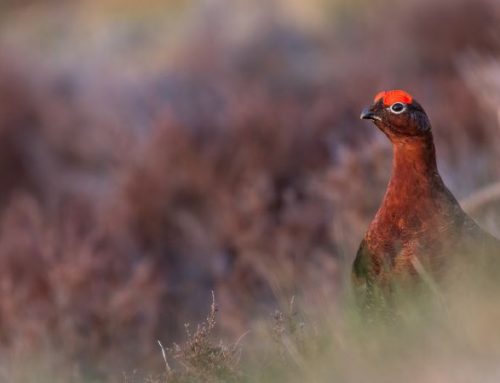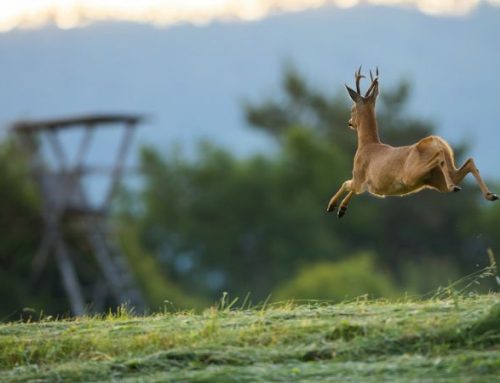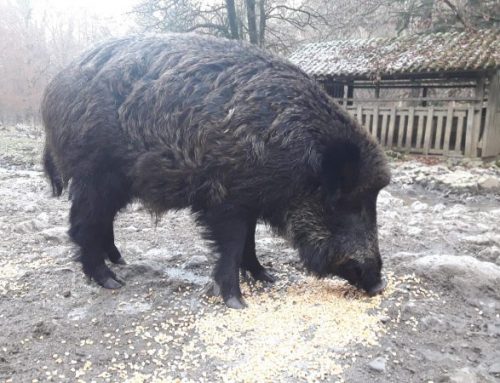Cooking Wild Game: The World of Game Has Always Fascinated for Its Deep Intertwining of Nature, Hunting Tradition, and Gastronomic Culture
An ancient passion, spanning centuries, reflected both in the aristocratic rituals of European courts and in the rural customs of the Italian countryside. In the collective imagination, hunting is not merely a sporting or subsistence activity: it is part of a worldview in which man measures himself against nature, respects it, listens to it, and gathers its fruits with moderation and awareness.
As early as medieval banquets, game birds proudly appeared on the tables of lords: golden pheasants, woodcocks roasted on silver spits, partridges served whole with ornamental plumage, as a display of prestige and refinement. Hunting was an art governed by precise codes, often reserved for the elite, but even in peasant villages, catching a thrush or a quail was a reward, a prize after long hours in the fields.
Among all types of meat that hunting can offer, game birds hold a special place. Not only for their elegance and complex flavors, but also for what they evoke: swift movements in the autumn skies, rustling among the leaves, the silent wait in a clearing at the first light of dawn.
We are speaking of delicate, aromatic meats capable of telling, on the palate, of forests, glades, and clear autumn skies. A good game dish is never improvised: preparing it requires care, respect for the animal, knowledge of the seasons, and experience matured over time. Each species has its own peculiarities, secrets, and culinary traditions. And every bite, if well prepared, becomes a little story, a return to the origins, an homage to nature in its most authentic form.
Pheasant: The Noble of the Hills
He is the symbol of game birds. The pheasant, with its regal plumage and elegant flight, has long reigned on the tables of haute cuisine.
Characteristics: Its meat is firm, lean, and well-balanced in flavor. Males, being larger, have more fibrous and aromatic meat, while females stand out for a rounder, sweeter taste.
In the kitchen: To preserve its juiciness and delicacy, it is recommended to bard the breast or wrap the bird in pancetta. Delicious roasted — perhaps stuffed with apples, chestnuts, or herb bread — it also lends itself well to braising. A timeless classic is pheasant cacciatora, prepared with herbs, red wine, and slow cooking that delivers deep, intense flavors.
Partridge and Grey Partridge: Small but Precious
Often confused, partridge and grey partridge are the little gems of game. Both offer an extraordinary tasting experience, perfect for those who appreciate refinement.
Characteristics: Partridge meat has a bold flavor, with wilder notes. Grey partridge, on the other hand, is delicate, almost silky on the palate. What they share is tenderness, though they must be cooked carefully to prevent them from drying out.
In the kitchen: Excellent simply roasted with butter, sage, and a splash of Marsala, they are also suitable for pan-cooking. For an elegant touch, they can be baked en papillote with aromatic herbs and mushrooms. They are also perfect served in individual portions, paired with a red fruit reduction.
Ducks and Geese: The Power of Water
Duck and goose, wild waterfowl species, offer a rich and enveloping alternative to land game birds. Their dark, fatty meats lend themselves to sumptuous dishes.
Characteristics: The meat is intense, almost earthy, with a pronounced fat component — especially in the goose. For this reason, longer aging enhances tenderness and refines the aromatic profile.
In the kitchen: Duck is perfect for slow roasting at low temperature, yielding crispy skin and a rosy center. The breast can also be quickly seared in a pan and served sliced over seasonal vegetables or with a citrus sauce. Goose, on the other hand, shines in braises — perhaps with red wine and dried plums — or stuffed with chestnuts, onions, and spices for an unforgettable festive dish.
Small Migratory Game: Quail, Thrushes, Woodcock, and Blackbirds
Small, agile, and imbued with the fragrance of the woods. Migratory birds are true jewels for connoisseurs, often the secret behind extraordinary risottos and appetizers.
Characteristics: Their diet greatly influences the flavor of their meat. Thrushes and blackbirds, for example, feeding on wild berries and fruits, develop aromatic meat with an almost wine-like aftertaste. The woodcock is the emblem of hunting excellence — rare, prized, and marked by a bold, distinctive wild flavor.
In the kitchen: Quail lend themselves beautifully to being stuffed and roasted. Thrushes and blackbirds are perfect for making rich sauces to accompany polenta or risotto. Woodcock is best served “on the breast,” simply seared in clarified butter with a splash of Marsala, or transformed into a luxurious ragù for fresh egg tagliatelle.
A Legendary Recipe for Migratory Game: The Brescian Spit
Small but Important Secrets for Cooking Game to Perfection
Aging (Frollatura): Aging is the starting point for good meat. Even 3–4 days in the fridge, at a controlled temperature and wrapped in kitchen paper, can make a noticeable difference.
Marination: Before cooking, leaving the meat overnight in a marinade of red wine, spices, and citrus can tenderize it and tone down any overly strong gamey notes.
Pairings: Game thrives on contrasts. Chestnuts, truffles, wild berry jams, as well as baked apples or balsamic reductions, can elevate a dish to another level.
Wines: A young Barolo, a Brunello di Montalcino, or an Amarone are perfect companions for game dishes — full-bodied, persistent, and capable of enhancing the meat’s flavor without overpowering it.
The cuisine of game is not just a way to eat: it is culture, respect for nature, and a celebration of time and seasonality. A well-cooked woodcock, a carefully served pheasant, tells stories of forests, cold dawns, and silences filled with anticipation.
So, whether for a special occasion or simply to enjoy something authentic, bringing game birds to the table is an ancient, precious gesture — to be experienced with awareness and, always, with gratitude.
A Recipe to Try: Shredded Pheasant Salad
An elegant, fresh dish perfect for highlighting a “minor” game bird, often underestimated.
Ingredients for 4 people:
- 1 whole pheasant
- Extra virgin olive oil
- A small piece of butter
- 1 celery stalk
- 1 carrot
- 1 onion
- Whole black peppercorns
- Bay leaves, rosemary, sage
Instructions:
- Brown the pheasant pieces in butter with a drizzle of good olive oil.
- Add roughly chopped celery, carrot, and onion.
- Use about half a glass of olive oil per pheasant.
- Let it slowly stew with 3–4 black peppercorns and two bay leaves. You can also add sage and rosemary.
- Cook until the meat easily falls apart by hand.
- Cool and serve at room temperature, with bitter salad greens, dried fruits, and a drizzle of olive oil.
Pressed Duck: A French Symphony of Blood, Elegance, and Memory
There are dishes that are not simply cooked: they are passed down through generations. Among these, one of the most mysterious, fascinating, and aristocratic is undoubtedly the Canard au Sang, or pressed duck — an immortal emblem of classic French haute cuisine. A dish born in the heart of the Belle Époque, made famous by the legendary Tour d’Argent in Paris, a restaurant boasting over four centuries of history and an unparalleled view of the Seine and Notre-Dame.
Here, the duck is not merely served: it is performed. The preparation takes place just a few meters from the table, in a ritual worthy of an opera stage: the duck, roasted and deboned with surgical precision, is pressed in a majestic engraved silver press, extracting a dark, dense elixir of marrow, blood, and noble juices, which becomes the heart of the sauce.
The Allure of Noble Blood
In the Anglo-Saxon world, this practice might have been unsettling. But for the French, lovers of complexity, pressing represents the apotheosis of flavor — the ability to extract the maximum from the raw material. It is a declaration of love for game and for the philosophy of totality: nothing is wasted, everything is valued.
At Tour d’Argent, every pressed duck is numbered, a tradition begun in 1890, and the most famous was #112,151, served to Franklin D. Roosevelt. Historic patrons have included Giovanni Agnelli, Salvador Dalí, Elizabeth Taylor, as well as royals and writers, all drawn to that unique blend of spectacle, ritual, and profound taste.
Hunting Cuisine, But with White Gloves
Although this recipe has bourgeois and cultured origins, its soul is deeply rooted in hunting. The scent of blood, the strength of dark meat, the liver, the marrow — these are all elements reminiscent of game cuisine, elevated to the rank of imperial gastronomy.
In an age where authentic taste is sought, this dish embodies the connection between tradition and boldness, refinement and rural roots. It is an homage to game considered as cultural heritage, not merely an ingredient.
The Nobility of Game on the Table
In a time when food is often treated as a mere commodity — packaged, replicable, and devoid of history — the meat of feathered game represents a return to the most authentic roots of our cuisine. It is the result of a delicate balance between man and nature, of an ancient gesture renewed with each season. Eating and cooking it is not only a pleasure for the palate but an act of awareness.
Every pheasant, every partridge, every woodcock tells the story of a territory, a vegetation, a flight. No piece of meat is ever the same as another, because no wild animal lives the same life twice. This is the greatness of game: in its uniqueness, imperfection, and vitality. A raw material that compels the cook to pause, listen, and choose wisely the cooking method, spices, and pairings, to enhance it without altering its essence.
Game is cuisine of respect, patience, and seasonality. It is an invitation to slow down, to rediscover the taste of real things, to reconnect with rituals and flavors that still whisper, yet speak with a voice that carries far. And so, preparing a feathered bird becomes more than a simple recipe: it is a cultural gesture, almost a ritual, linking the cook to a collective memory of forests, crackling fires, and silences broken only by the flutter of a wing.
Those who choose game choose to care for taste, the land, and time. And ultimately, they choose to honor with dignity and gratitude the gift that nature has given us.
The Recipe: Canard au Sang — Pressed Duck from Tour d’Argent
Ingredients (for 2 people)
For the duck:
- 1 young, fatty Challans or Barbary duck, whole, with liver and reserved blood
- Salt and pepper, to taste
- 50 g (≈ 3.5 tbsp) butter
For the sauce:
- 1 glass of full-bodied red wine (Bordeaux or Burgundy)
- 2 tablespoons Cognac
- 1 small glass of Port
- 2 shallots, finely chopped
- 1 tablespoon brown game stock
- 30 g cold butter
- The duck’s liver and heart
- Duck blood (strained and kept separately)
- Juice of half a lemon
Equipment:
- Silver duck press (or meat press)
- Sauté pan (with high sides)
- Fine sieve
- Whisk
Procedure
1. Preparing the Duck
- Pluck and clean the duck, leaving it whole with skin and bones.
- Cook the whole breast “rare” in a pan with clarified butter or briefly roast it in the oven, keeping the interior very pink.
- Remove the breasts and keep them warm, wrapped in aluminum foil.
2. Preparing the Pressed Jus
- Roughly chop the carcass (bones, wings, back).
- Place it in the silver duck press and press firmly to extract blood, marrow, and tissue. This rich extract is the soul of the dish.
- Strain the juice through a fine sieve and set aside.
3. Preparing the Sauce
- In a sauté pan, lightly brown the shallots in some butter.
- Add the finely chopped liver and heart of the duck and sauté over medium heat.
- Deglaze with Cognac, then add the red wine and Port. Reduce by half.
- Stir in the brown game stock and cook for a few more minutes.
- Incorporate the pressed duck juice, whisking continuously.
- Off the heat, add the duck blood and lemon juice, without boiling (otherwise it will coagulate).
- Mount with cold butter to create a glossy, silky sauce.
4. Plating
- Slice the duck breasts thinly.
- Arrange on a warmed plate.
- Spoon over the hot, velvety sauce.
- Serve immediately, ideally with toasted bread, chestnut purée, or caramelized pears.
Perfect Pairing
A fine Burgundy Pinot Noir or a Pomerol will perfectly complement this dish, honoring the nobility of the preparation.
A Glimpse into the World of Game
The world of game has always fascinated for its deep intertwining of nature, hunting tradition, and gastronomic culture. An ancient passion spanning centuries, reflected both in the aristocratic rituals of European courts and in the rural customs of the Italian countryside. In the collective imagination, hunting is not merely a sport or a source of sustenance: it is part of a worldview in which man measures himself against nature, respects it, listens to it, and gathers its fruits with moderation and awareness.
Even in medieval banquets, feathered game proudly appeared on noble tables: golden pheasants, woodcock roasted on silver spits, partridges served whole with ornamental plumage, as a display of prestige and refinement. Hunting was an art governed by precise codes, often reserved for the elite, yet in peasant villages, catching a thrush or a quail was a reward — a prize after long hours in the fields.
Among all types of meat that hunting can offer, feathered game holds a special place. Not only for its elegance and complex flavors, but also for what it evokes: swift movements across autumn skies, rustling through the foliage, the silent wait in a clearing at the first light of day.
We are speaking of delicate, aromatic meats, capable of conveying, on the palate, the forests, the glades, the clear autumn skies. A good game dish is never improvised: preparing it requires care, respect for the animal, knowledge of the seasons, and experience honed over time.
Each species has its own peculiarities, secrets, and culinary traditions. And every bite, if well prepared, becomes a small story — a return to the origins, a tribute to nature in its most authentic form.
FAQ












